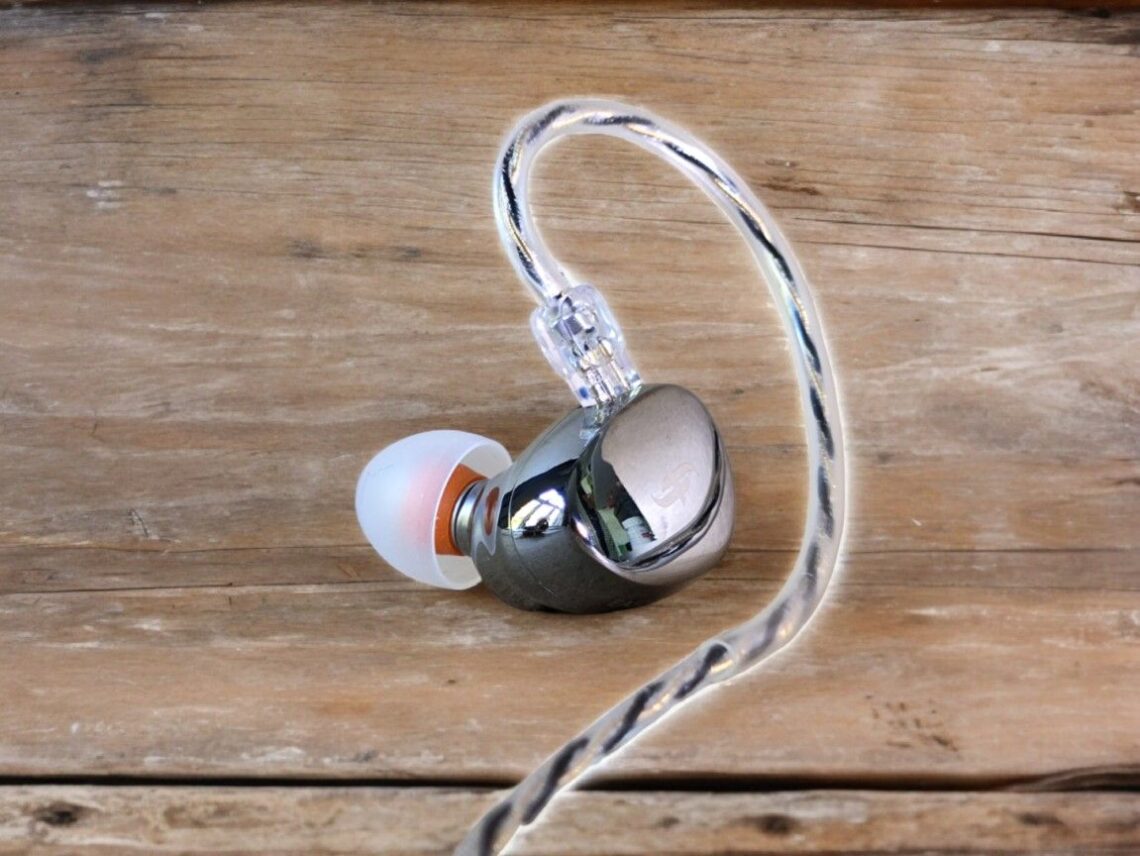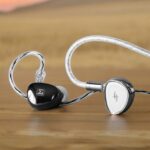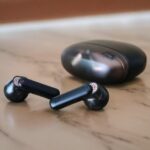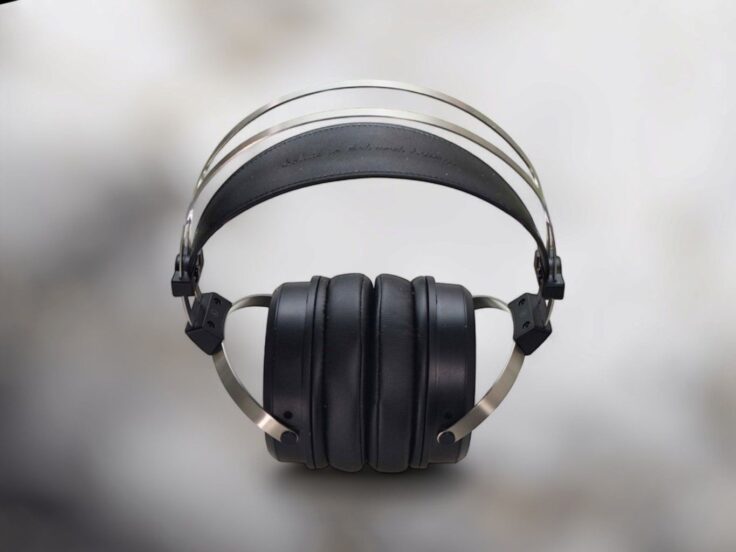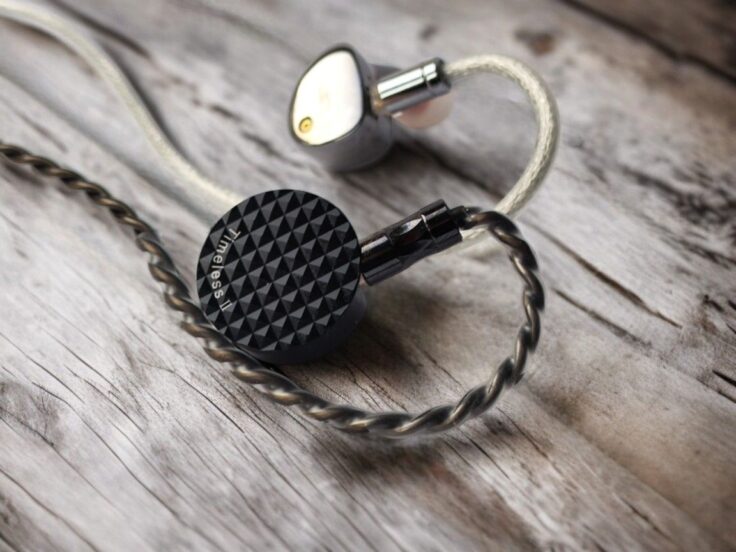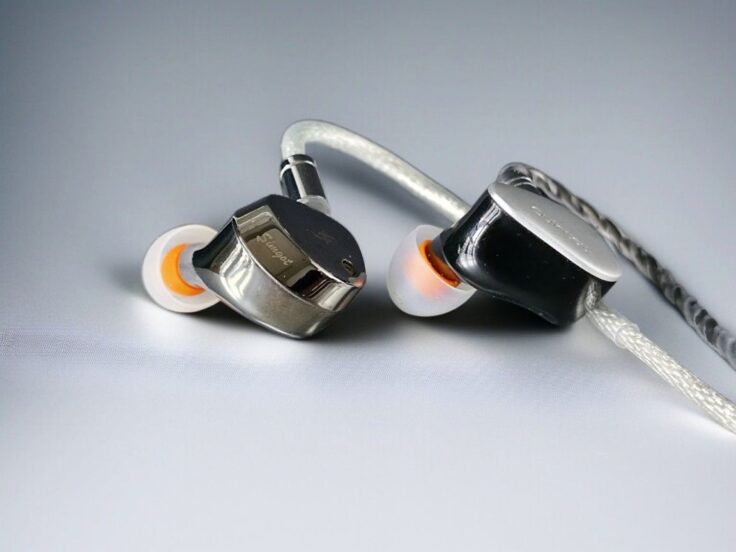The Simgot EA500LM is a single dynamic driver in-ear monitor earphone. It has a lot in common with its more expensive siblings, the EA1000 and EA2000. They all are single dynamic driver earphones using Simgot’s dual magnet, dual cavity driver design. They also look very similar, with beautifully crafted metal housings. EA500LM is currently priced just below 100 USD, the EA1000 just above 200 USD, and the EA2000 just above 300 USD.
The EA500LM hit the market in early 2024 as an upgrade to the EA500. As mentioned, the EA500LM uses a single full-range dynamic driver that employs Simgot’s “dual magnet, dual cavity” driver design, the same technology as in the bigger siblings. The diaphragm is more different; the EA500LM uses a newly developed lithium-magnesium dome diaphragm, whereas the predecessor EA500 used a DLC composite diaphragm and the EA1000 and EA2000 use “sputter deposition purple-gold diaphragms.”
Like the EA500, the EA500LM has a small vent hole, while the EA1000 and EA2000 utilize a passive radiator in a semi-closed design.
The EA500LM comes with three pairs of tuning nozzles, one more than the EA500. The nozzles have a significant effect on the sound.
The EA500LM looks basically identical to the EA500 and is a real beauty – and a fingerprint magnet. It’s very comfortable to wear and sit nicely in the ear, not protruding much.
The EA500LM comes with a high-quality silver-plated OFC (oxygen-free copper) cable with standard dual-pin 0.78mm connectors on the IEM side and a standard 3.5mm unbalanced connector on the other end. The cable looks identical to the one supplied with the EM6L, except that the 0.78 mm plugs on the EM6L are made for protruding connectors.
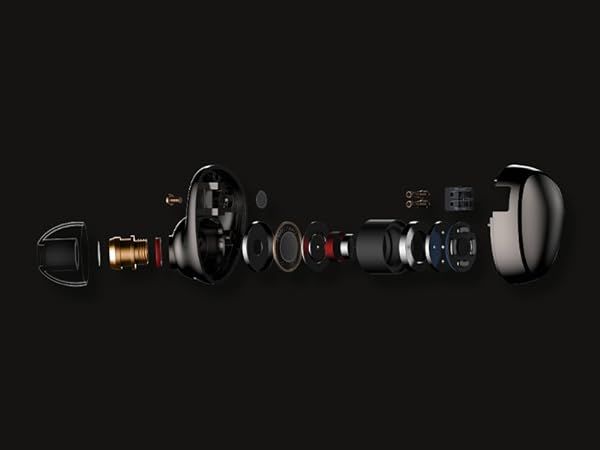
SIMGOT EA500LM SPECIFICATIONS
- Driver: single dynamic driver with “dual magnet, dual cavity” technology
- Diaphragm: lithium/magnesium alloy
- Impedance 21Ω±15%(@1kHz)
- Sensitivity: 123 dB with the golden copper and red ring steel nozzles, 124 dB with the black ring steel nozzles
- Frequency response range: 10 Hz–50 kHz
- Effective frequency response: 20 Hz–20 kHz
- Connector: 0.78mm 2-pin
- Cable material: high-purity silver-plated OFC copper cable
Check the current price here
Price at launch / when reviewed: 89 USD. Disclaimer: The review unit was sent to us by Simgot for the purpose of this review with no strings attached.
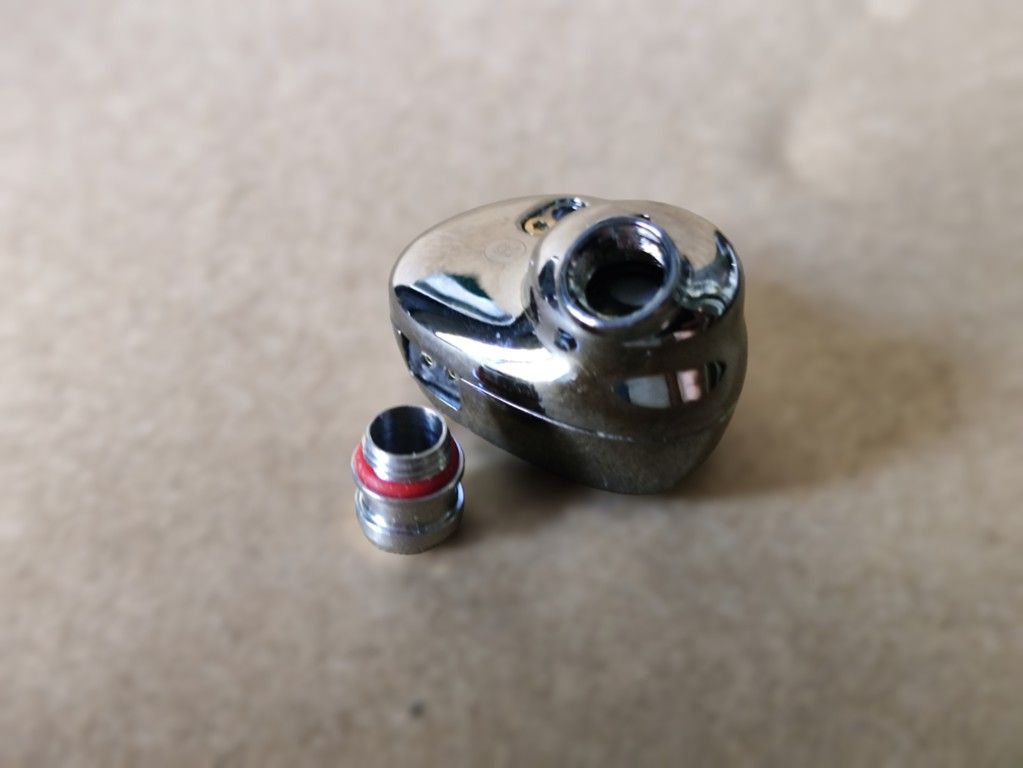
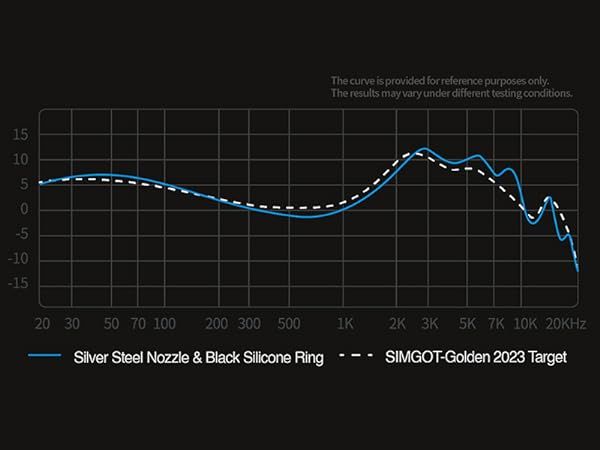
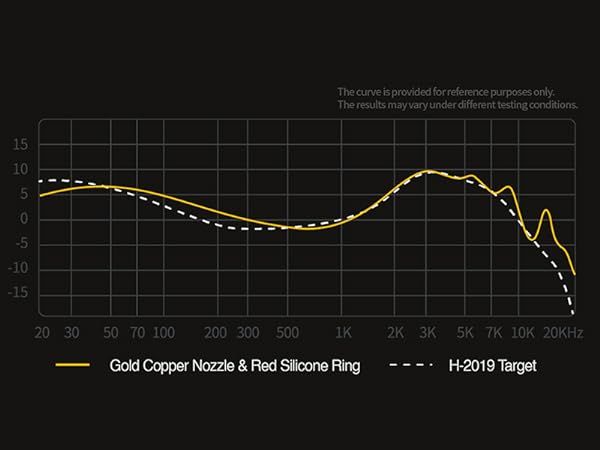
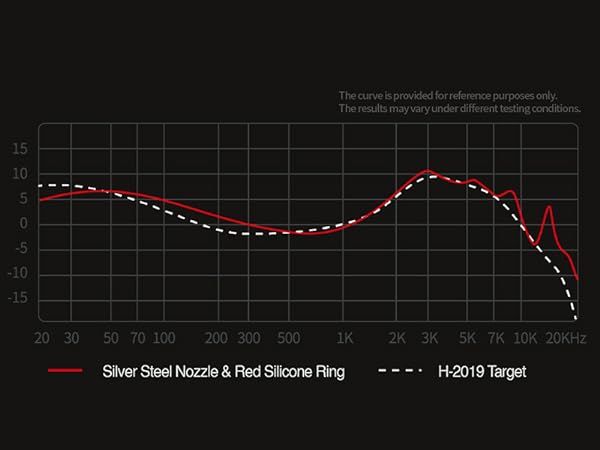
INTERCHANGEABLE TUNING NOZZLES
Like the more expensive EA1000, the EA500LM comes with three pairs of interchangeable tuning nozzles. They have a black or a red rubber sealing ring:
- Golden copper red ring nozzles: There is black tuning foam that fills the inside of the nozzle. These nozzles were mounted on the earphones when I unboxed them. Sensitivity 123dB
- Black ring steel nozzles: Also here, there is black tuning foam inside of the nozzle. Sensitivity 124dB. Because the sensitivity is different from the golden copper red ring, I assume the two pairs use a different type of foam.
- Red ring steel nozzles: There is nothing inside the barrel.
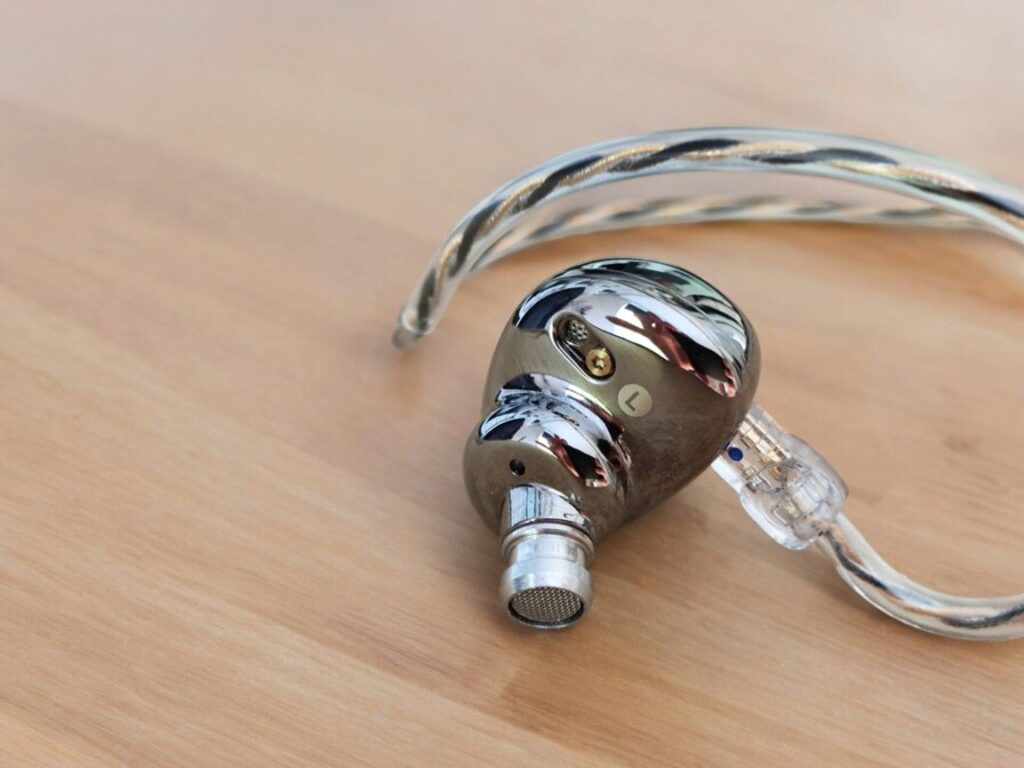
LISTENING IMPRESSIONS
Jambi by Tool
Golden copper nozzles: The guitars have good texture but are warm and non-fatiguing. The bass is full-bodied and slightly round-sounding; it is very satisfying but lacks a bit of definition. The vocals are good and quite lush, with no hint of sibliance.
Black ring steel nozzles: the fuzz guitars are more aggressive and have more texture and crispness. The vocals are closer to sibilance than with the copper nozzles. The whole expression is much more aggressive, with crisper percussion along with the guitars.
Red ring steel nozzles: these are a step back towards the sound of the copper nozzles, or rather a combination of the two previous sound profiles. It is less aggressive and crisp than the black ring nozzle but still more articulated, with better separation and texture than the copper nozzle.
Smile by Pearl Jam
Golden copper nozzles: Dynamics are good; the harmonica stands out nicely in the mix, as do the vocals. Again, there’s no problem with too much sibilance, something this track often induces.
Black ring steel nozzles: also here, the music becomes clearer and crisper. There is better separation of the instruments and better imaging. The vocals do not become sibilant.
Red ring steel nozzles: they sound quite similar to the copper nozzles, but with a little bit more crispiness, but not so much that Eddie Vedder’s vocals become sibliant.
Almost Like The Blues by Leonard Cohen
Golden copper nozzles: again, the bass is a bit round, but it’s full-sounding and enjoyable. Leonard Cohen’s vocals are extremely nicely rendered, with just the perfect amount of texture combined with a fullness and warmth that really suit this track.
Black ring steel nozzles: The bass is tighter and better defined than with the copper nozzles. Leonard Cohen’s vocals have more texture.
Red ring steel nozzles: The bass is rounder than with the black ring steel nozzles, and the vocals sound very much like the copper nozzles – there might be a bit better separation and imaging, but the difference to the copper nozzles is minor here.
Black Crow by Cassandra Wilson
Golden copper nozzles: the vocals are extremely nicely rendered, with a rich and natural timbre. I find the image depth quite satisfactory, but I am a bit disappointed by the lack of blackness between the instruments on this track. The percussion, and especially the highs, are quite delicate and very nicely done.
Black ring steel nozzles: the sound stage is more open, deeper, taller, and wider. Imaging is also better with well-defined space between the instruments. Everything is crisper and more textured than with the copper nozzles.
Red ring steel nozzles: the soundstage becomes smaller than with the black ring nozzles, much like the way it was with the copper nozzles. The female vocals are delicious. Imaging and separation are a bit better than with the copper nozzles.
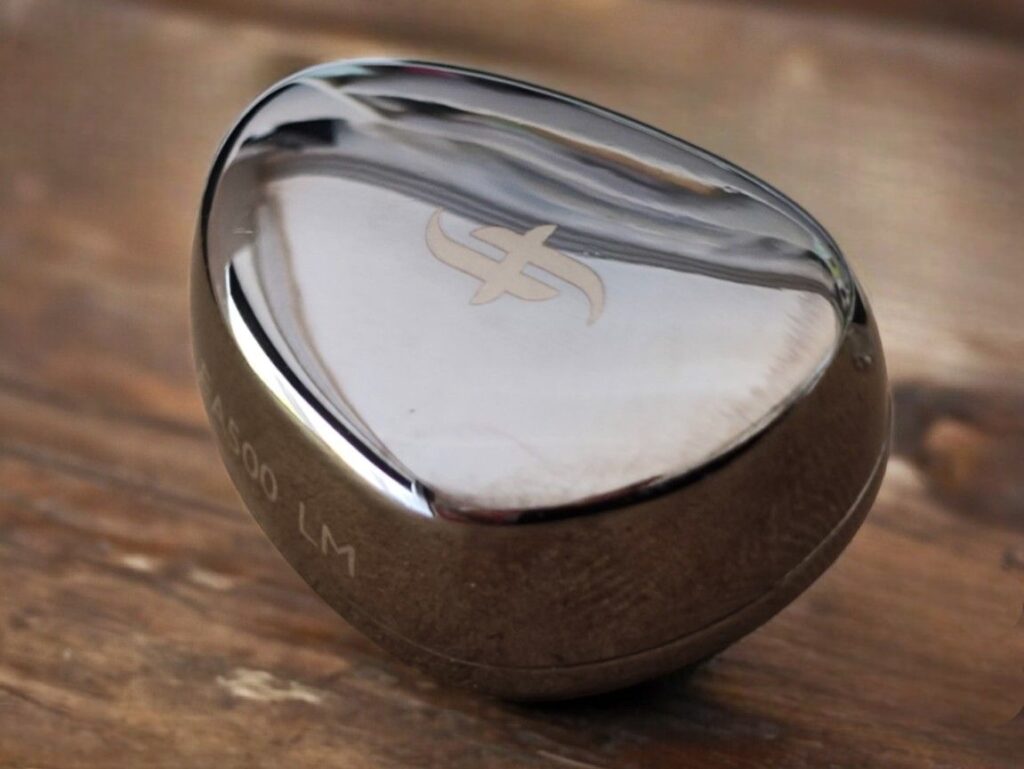
Some Day My Prince Will Come by Coryell-Coryell-Vitous
Golden copper nozzles: The sound is quite warm and has a good amount of body. It is thick and delicious; the bass is meaty and round, the mids are quite dense, the treble is laid back. I do not find that it is dark sounding, but it is not for treble heads or fans of overly articulated details.
Black ring steel nozzles: the presentation is still a bit warm but not as thick and full-bodied as with the copper nozzles. Again, the imaging and separation are better, and the sound is not as lush.
Red ring steel nozzles: it sounds warmer than the black ring nozzle and a little crisper than the copper nozzles. It’s the perfect blend.
Bored by Deftones
Golden copper nozzles: The guitar riffs are fat-sounding, and the vocals are warm. The percussion is still quite snappy, and it feels dynamic. I really like the way this track is rendered; it can often sound a bit thin and sizzly.
Black ring steel nozzles: the fuzz guitars are crisper and more textured. It’s more like what I am used to, but I preferred the copper nozzles.
Red ring steel nozzles: it sounds somewhat like a blend of the other two. Keeping much of the warmth from the copper but a bit crisper and tighter. I still prefer the copper nozzles on this track.
As Before by Olga Konkova
Golden copper nozzles: Again, the sound is a bit on the thick and full side of neutral. With this track, I tend to miss a bit of clarity. The vocals and the piano are less crisp and clear than I’m used to.
Black ring steel nozzles: the sound is more spacious and has more clarity.
Red ring steel nozzles: They’re tighter sounding and crisper than the copper nozzles, and almost as clear sounding as the black ring nozzles. I think this is the sweet spot.
Escape Route by Boris Blank
Golden copper nozzles: this electronic track sounds absolutely stunning. It’s thick, yet dynamic and crisp in a nice way. It’s really groovy. The bass is tactile and enveloping.
Black ring steel nozzles: it is not as thick sounding as with the copper nozzles, but it’s still great. It’s significantly crisper.
Red ring steel nozzles: almost as full-sounding as the copper nozzles, yet crisper and with better imaging.
Mahler’s Symphony No. 2 III by Paavo Järvi
Golden copper nozzles: This impressive orchestral piece sounds really good on the EA500LM. Because it is so non-fatiguing, I can really crank up the volume and get a great sense of dynamics. Also, the warmish midrange really suits the strings, and the polite, well rounded treble is delightful. The kettle drums sound massive.
Black ring steel nozzles: It sounds a bit crisper and has better articulation. The main qualities remain intact.
Red ring steel nozzles: there’s more texture and crispness than with the copper nozzles, yet still keeping much of the delicious warmth. The sound is closer to the black ring nozzles than the copper.
Young Vivaldi Violin Concerto RV820 III by Ensemble Modo Antiquo
Golden copper nozzles: As with the previous piece, the violins sound natural and organic. The imaging is not as hyperrealistic as it can be with other earphones, but it feels very “live”, like attending a real concert.
Black ring steel nozzles: There is more crispness, there’s sharper edges, and the strings have more attack. However, the performance sounds more like a recording – like it usually does, the great sense of “being there” is reduced a little compared to the copper nozzles, subjectively speaking, of course.
Red ring steel nozzles: On this track, I find the red ring steel nozzles to sound more like the black ring steel nozzles than the copper nozzles.
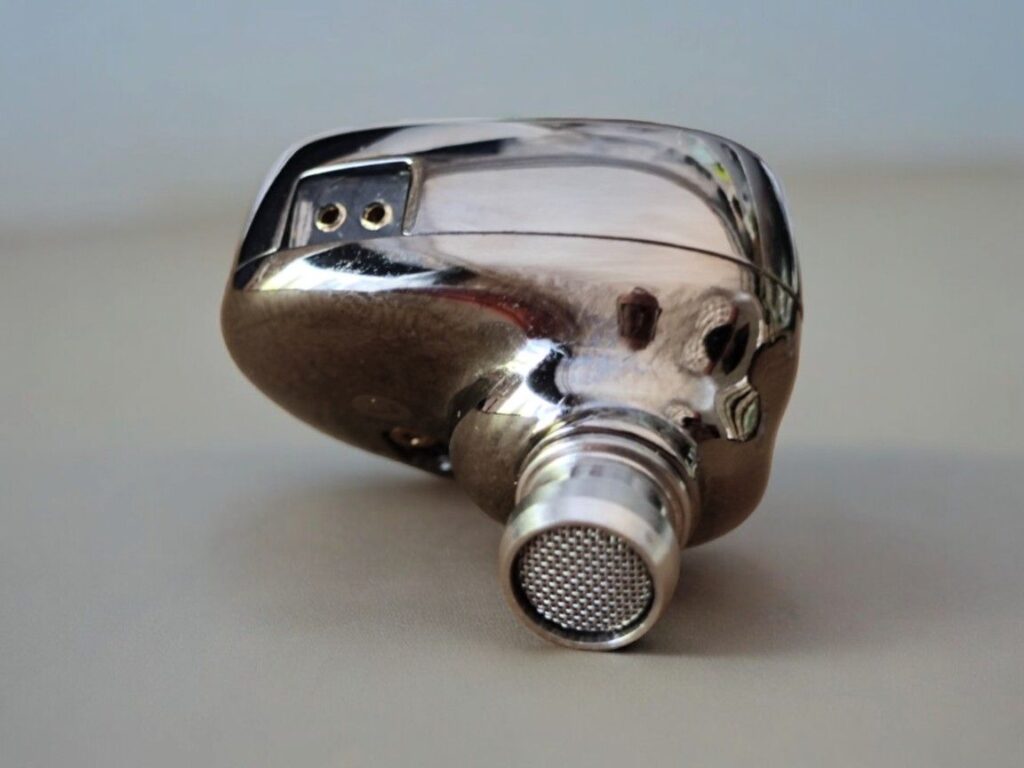
NOZZLES, NOZZLES, NOZZLES
Golden Copper With Red Ring
These are filled with black foam and were mounted on the EA500LM when they were unboxed. .
The sound of the EA500LM with these is delicious: warm, lush and full-bodied. The midrange is extremely natural-sounding, with a warm and inviting tonality.
It is still dynamic and nicely detailed. You lose a bit of texture and articulation, but often it’s definitely worth it. The bass is thick and round; it can often be very satisfying, but sometimes that lack of definition makes you feel like you are missing something. The sound stage and imaging are also suffering a bit. Some tracks definitely need more clarity and crispness to shine; others are just perfect. This tuning is certainly not for everyone, but I am a fan of warm and lush sound and really enjoy it.
Black Ring Steel Nozzles
These are filled with black foam.
These nozzles are significantly crisper and have a more present treble. The bass is tighter, the mid-range is not as warm and lush, and the treble is not as laid-back and gentle. The bass is a lot tighter, the soundstage is larger, and the imaging more precise with more space between instruments.
It is not a total transformation, but the change is significant. However, even with these nozzles, I wouldn’t call the EA500LM a bright-sounding.
Red Ring Steel Nozzles
These have no foam or filter, they’re just an empty barrel.
I find them to have a clear midrange, medium tight bass, clear highs, and good dynamics.
These nozzles are the compromise, the middle ground. With every track, I find them to sound something in between the other two pairs of nozzles. Sometimes they sound closer to the copper nozzles, and sometimes it is closer to the black ring nozzles. It depends on the track and which frequencies are most prevalent.
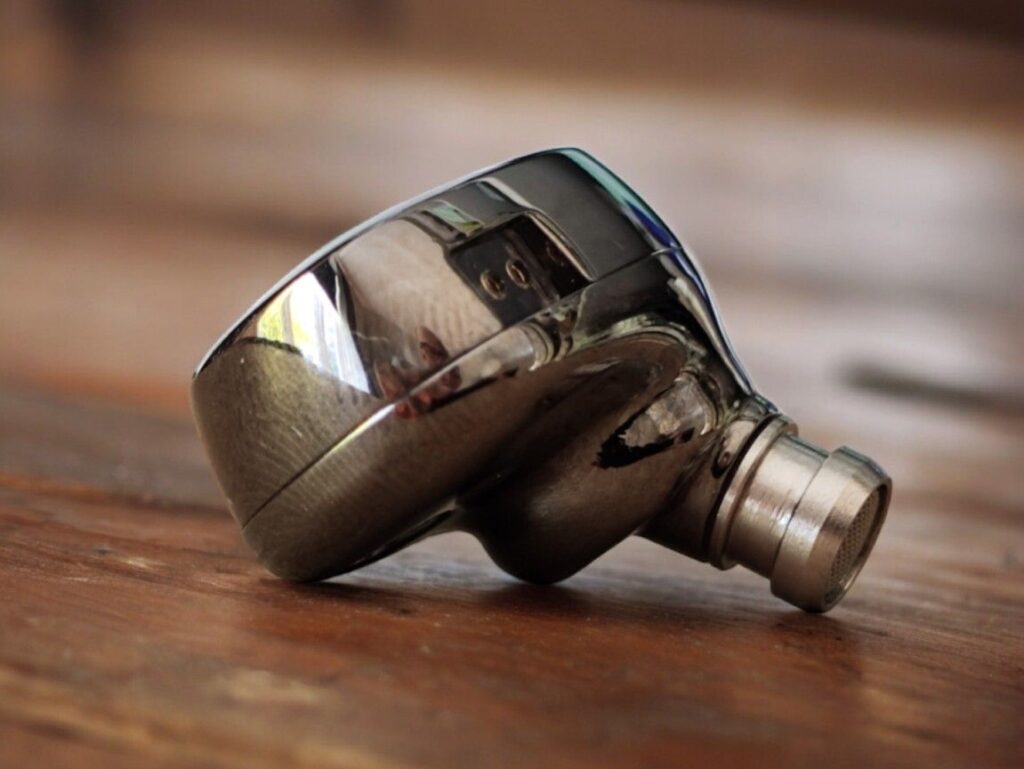
NOZZLES CONCLUSION
I like the sound of all three nozzles. They are not completely transformative; they are variations, with different strengths. Sometimes the differences are very subtle, and sometimes they make a big difference in the musical experience.
As I find the red ring steel nozzles to be a blend of the two others, embodying most of the qualities from both, those are the ones I am sticking with when doing comparisons to other IEMs.
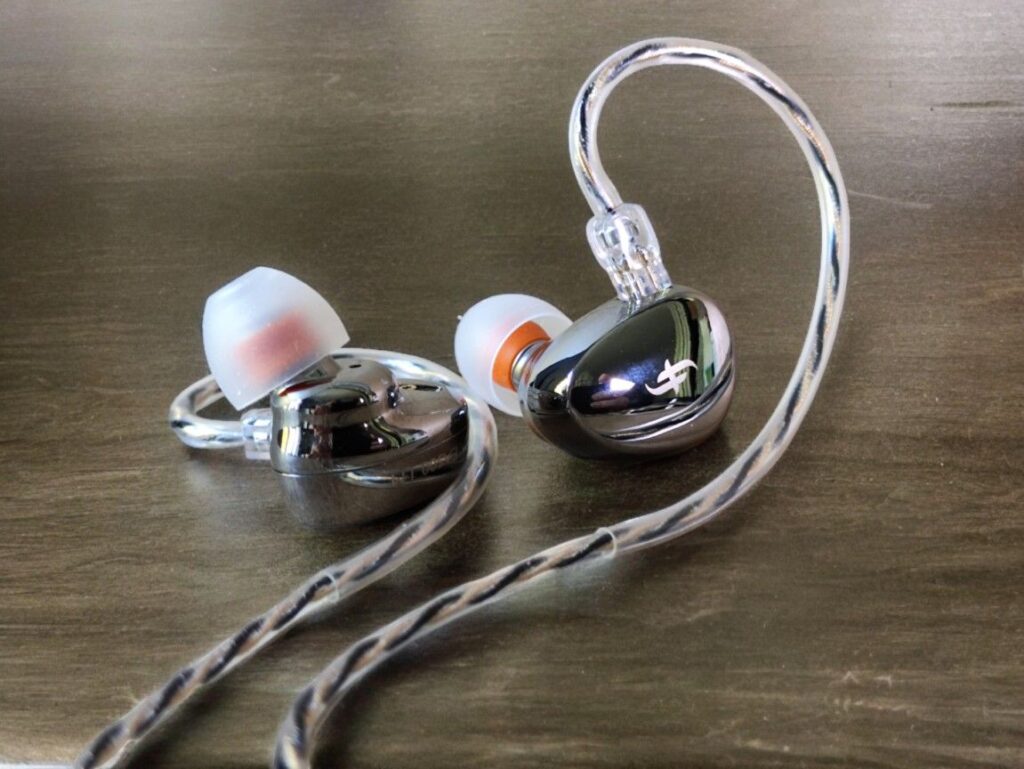
WRAPPING IT UP
Sound Signature
Like most IEMs, these have a variation of a so called V-shaped sounds signature. The bass is powerful, the treble is crisp and clear. The midrange still doesn’t feel withdrawn, it’s nicely present and with some help from the bass the midrange often comes across as relatively warm.
Treble
The EA500LM is relatively bright, but I never found it to be harsh, piercing or sibilant. I find the treble to be clear and detailed, with a very nice and liquid quality to it.
Midrange
The midrange is relatively polite, but with good clarity. It’s detailed yet smooth and organic.
Bass
The bass of the EA500LM is powerful, although not the tightest. It is not bad; I can fully enjoy it, but in direct comparison to certain other IEMs, it is very clear that the bass quality isn’t the best part of the EA500LM. There are others that are tighter and more defined. That’s being said it often gives a nice warmth to the overall presentation and helps the midrange sound fuller than it otherwise would be.
Soundstage and Imaging
The soundstage width, height, and depth are good for an IEM. Further, the EA500LM has great imaging, with better separation of instruments, a blacker background, and a much greater sense of depth than the similarly priced earphones I’ve compared it to.
Details, Dynamics and Timbre
The EA500LM is quite dynamic sounding, especially with regards to macrodynamics. When it comes to microdynamics, while the bass suffers, the midrange and especially the treble are great.
Detail level is generally high, with the exception of the bass. The midrange has lots of nuance and the treble has this liquid yet articulate and detailed clarity that I find very appealing.
With regards to timbre and tonality, I find the EA500LM to sound very organic and natural. Even though the bass and treble midrange is more pronounced than the mids, it sounds nice and warm; the full-sounding bass has its advantages.
COMPARISONS
SIMGOT EM6L
The EM6L and the EA500LM are similarly priced offerings from Simgot that have a lot in common. Both sound great, the tonal balance is similar, and they are very comfortable. A key difference is the bass, where the EM6L performs significantly better in terms of quality.
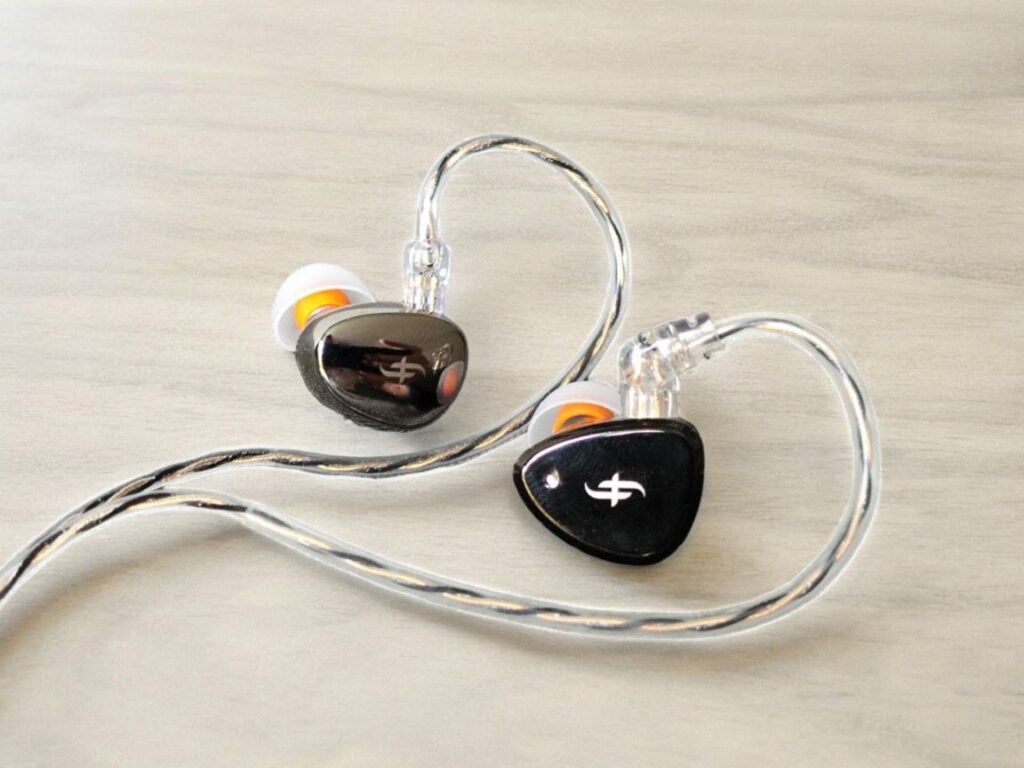
Generally, the EM6L sounds a bit more neutral and technical, while the EA500LM sounds more organic and musical. They both have good soundstage and imaging, but the EM6L is slightly better. It also has better passive sound isolation.
Further reading on The Headphoneer:
Our affiliate purchase links:
- Buy on Linsoul: Simgot EM6L
- Buy on Amazon: Simgot EM6L
SIMGOT EA1000
The Simgot EA1000 is the next step up the ladder in Simgot’s single dynamic-driver IEM line-up. It’s more than twice the price, but they share a lot of DNA and are tuned very similarly. Occasionally, they can even be hard to tell apart. Like the EA500LM, the EA1000 sounds very natural and has a well-balanced tuning.
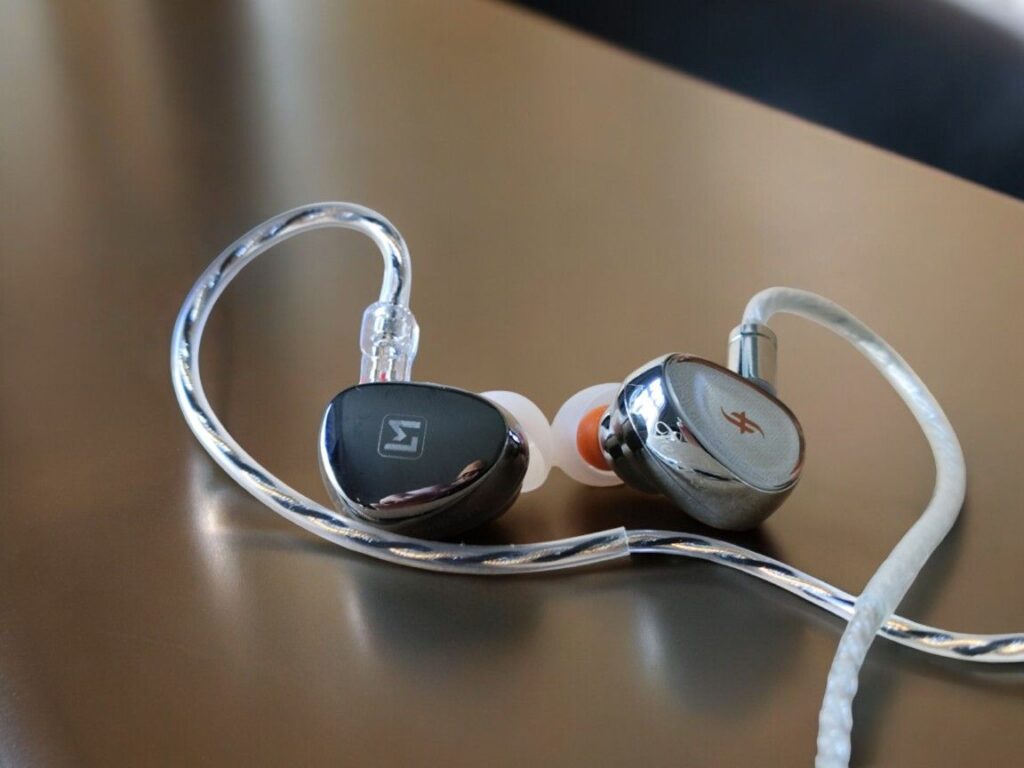
The differences between them in terms of tonality and timbre, dynamics and detail, as well as soundstage and imaging, depend on what tuning nozzles are used. However, the EA1000 generally offers better technical performance. Most noticeably, it has a tighter and better defined bass, better imaging, and a more articulate midrange and treble.
Our affiliate purchase links:
- Buy on Linsoul: Simgot EA1000
- Buy on Amazon: Simgot EA1000
Further readings on The Headphoneer:
- Simgot EA1000 Review
- EA1000 vs. EA500LM Comparison Review
SENNHEISER IE200
The IE200 is, like the EA500LM, a single dynamic driver IEM. The Sennheiser uses a 7mm “true response” transducer, the same as found in the acoustically more advanced IE300, IE600, and IE900.
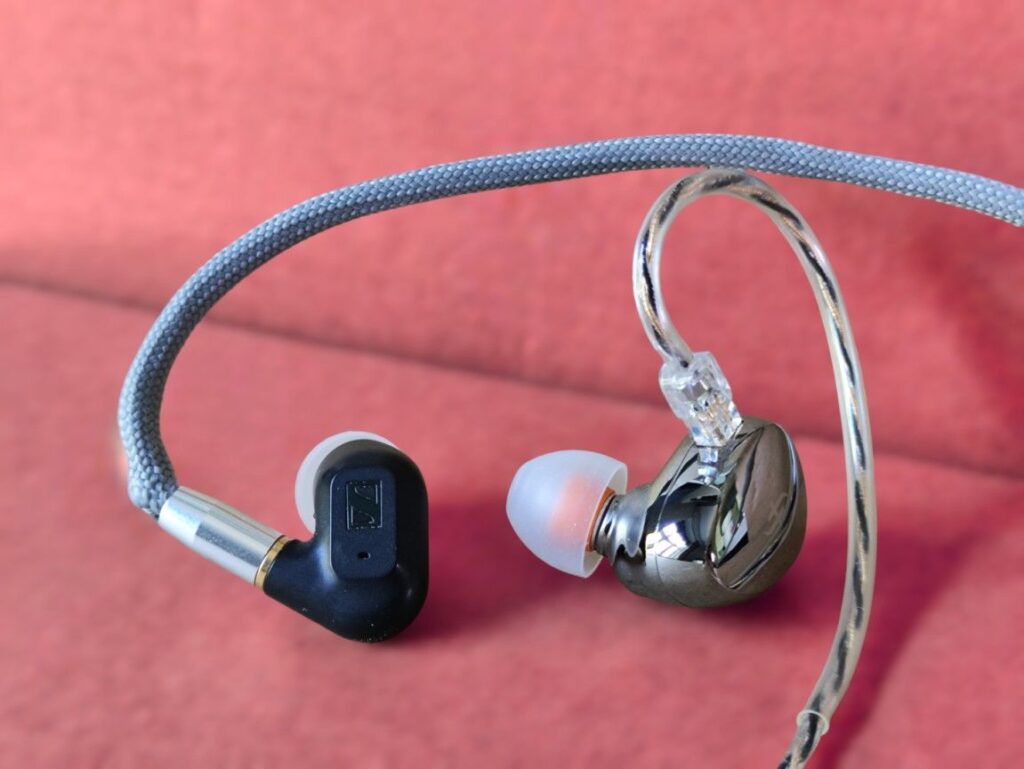
These are two quite different earphones. In terms of sound signature, the IE200 has less bass and treble quantity; it sounds darker and a bit laid back. The EA500LM is more energetic and has a more pronounced treble and a fuller bass.
In terms of detail retrieval, dynamics, imaging, and soundstage, the EA500LM is a step up from the IE200. Where the Sennheiser is undoubtedly better is in the bass department, providing a tighter, more defined, and textured low end.
When it comes to tonality and timbre, I find the EA500LM to sound more organic and natural, with the exception of in the lowest regions, where the IE200 is objectively better.
Physically, they are both small earphones, but the IE200 is minuscule and super-light, which can be a pro. However, the EA500LM is made of metal, not plastic, and looks like find jewelry.
The IE200 is significantly more demanding on the amplifier. For most portable or desktop amps it shouldn’t matter much, but it’s something to keep in mind if you want to get the best out of it.
Our affiliate purchase link:
- Amazon: Sennheiser IE200
Further readings on The Headphoneer:
LETSHUOER S12 PRO
The S12 PRO is a planar magnetic single-driver IEM that has gained significant popularity and is widely regarded as class-leading in the price range.
The S12 PRO and EA500LM have a similar sound signature, with powerful bass, a somewhat warm midrange, and crisp treble.

However, they’re also different. The Letshour S12 PRO is a planar magnetic IEM, renowned for its bass performance. The bass is tight and powerful with excellent definition and texture. The EA500LM, on the other hand, has a warm but often bloomy bass. In direct comparison with the S12 PRO, it’s very apparent that the EA500LM hasn’t quite nailed the lower registers as well as some of the competition.
The midrange, however, is quite similar between the two, but the S12 PRO is drier sounding, while the EA500LM is more organic.
They both have a well articulated treble. The S12 PRO can get a bit too crisp sometimes, while I think the EA500LM always stays on the right side of things, sounding liquid and natural.
In terms of soundstage and imaging, they are often quite close, but when there is a difference, it is in favor of the Simgot.
Our affiliate purchase link:
Further readings on The Headphoneer:
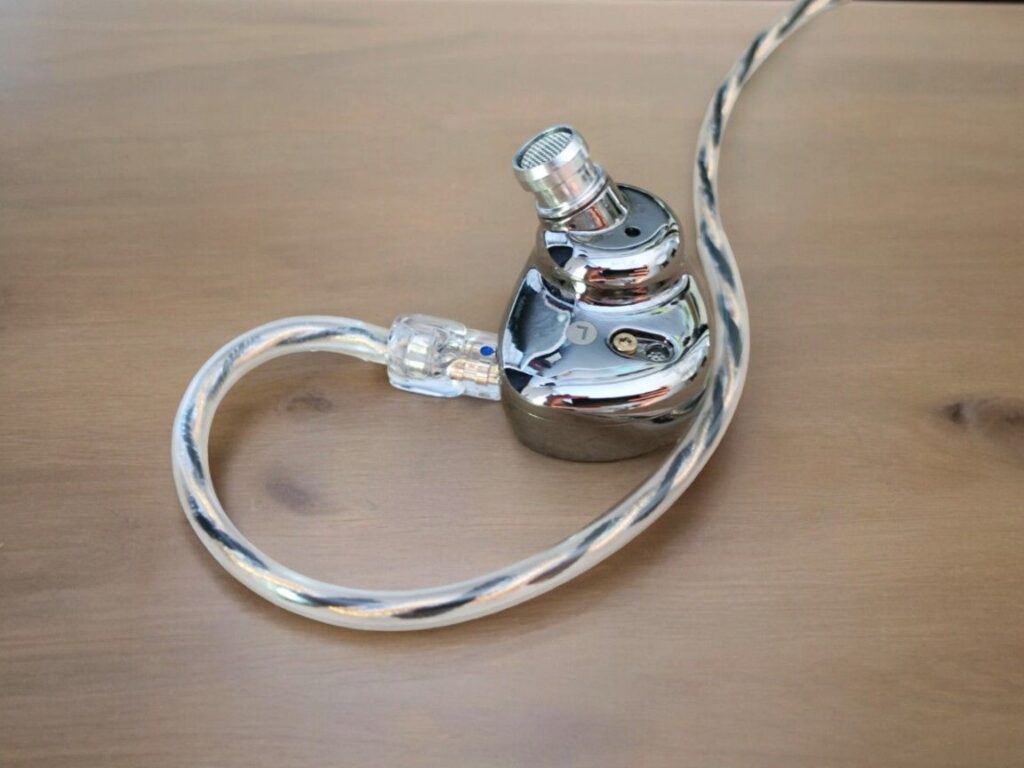
AMPLIFICATION
Most of my listening and the comparisons have been done with my desktop rig, mostly the Topping A90 amp and the RME ADI-2 DAC FS. I also tried the Sparkos Labs Gemini, which is a tube hybrid desktop amplifier. It sounds warmer in the mid-range than the other two desktop amps, and that suits the EA500LM well.
The portable options I have tested are the following:
- POCO F5 (phone with headphone jack)
- xDuoo Link2 Bal sounds
- THX Onyx
- Dragonfly Cobalt
The phone did a good job at 50% volume level, but the USB dongles did better, as was to be expected. I did not dig very deep into the comparisons with the dongles, but the difference between them and the desktop rig wasn’t especially big. However, the desktop rig always wins.
In conclusion, the EA500LM is not hard to drive, but the best sound was from the Sparkos Labs Gemini hybrid tube headphone amplifier, mainly because it brought the midrange more up front.
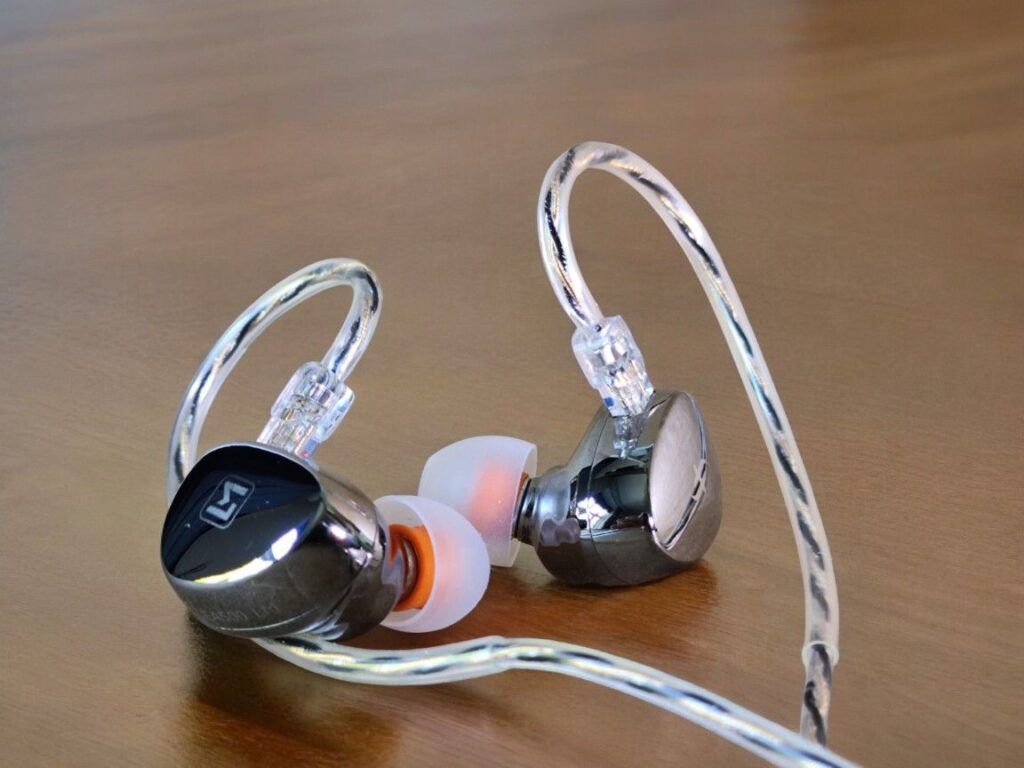
CONCLUSION
When I first heard the EA500LM, I honestly thought, “Wow, this might be all you need.”
However, the process of comparison is brutal: the bass could often be tighter, the midrange could sometimes be warmer.
That being said, the EA500LM has a detailed, dynamic, and somewhat warm sound with a great timbre. The bass is full-bodied, the mids are clear, the treble is crisp yet with a liquid character. Sibilance was never an issue for me.
The EA500LM is beautifully crafted and easy to drive. The supplied tuning nozzles are quite effective and give you three good-sounding variations to choose from.
I’m a big fan of Simgot’s EA1000 and EA2000, and I can happily state that the EA500LM doesn’t bring shame to the family.
Feel free to use our affiliate links for any purchase:
Any purchase you make on Amazon or Linsoul with any of our affiliate links will give us a small provision at no cost to you.
We only get a provision for items that are not returned, so there’s no incentive for us to recommend something that’s not good.
Linsoul : Headphones, Earbuds, Wireless Earbuds, Desktop DAC/AMP, Portable DAC/AMP, Digital Audio Players,
Amazon: Headphones, IEMs, Headphone Amplifiers, Home Audio or Anything else.
.
If you enjoyed this article or other content on The Headphoneer, you might consider leaving a small donation to keep this website up and running. No donation is too small. Thanks for supporting us!
If you like our work please follow us on Instagram, Facebook and Twitter , it will help us grow. Sharing is caring 🙂
.


